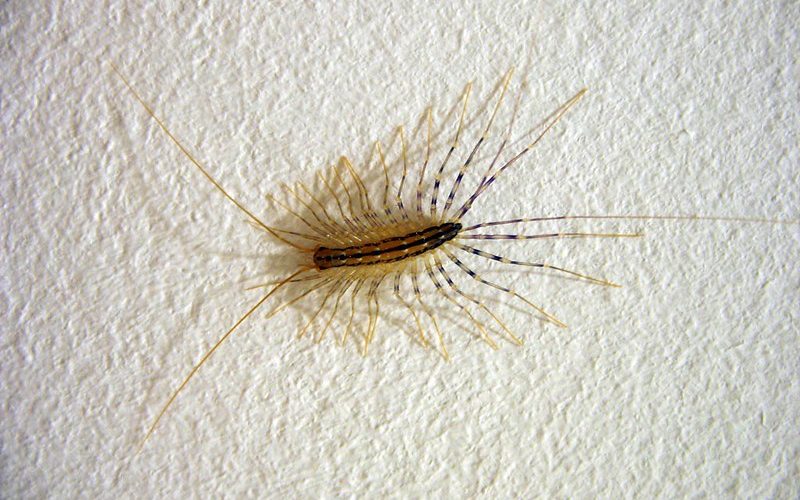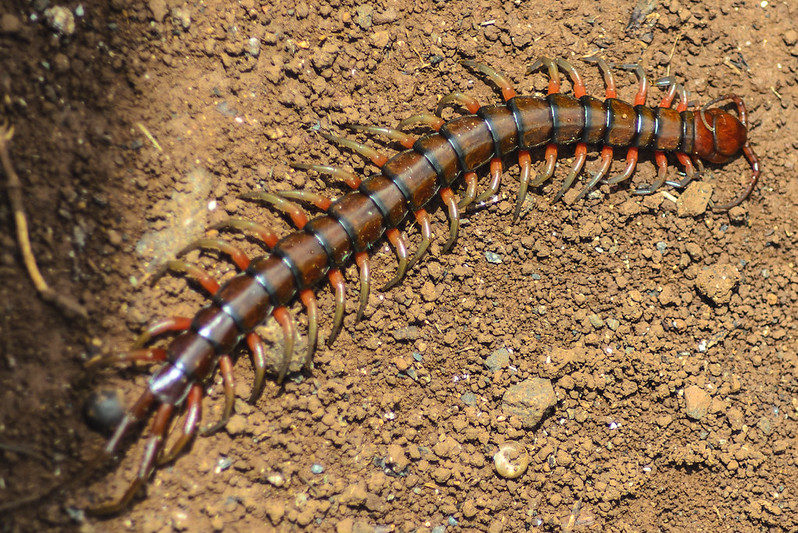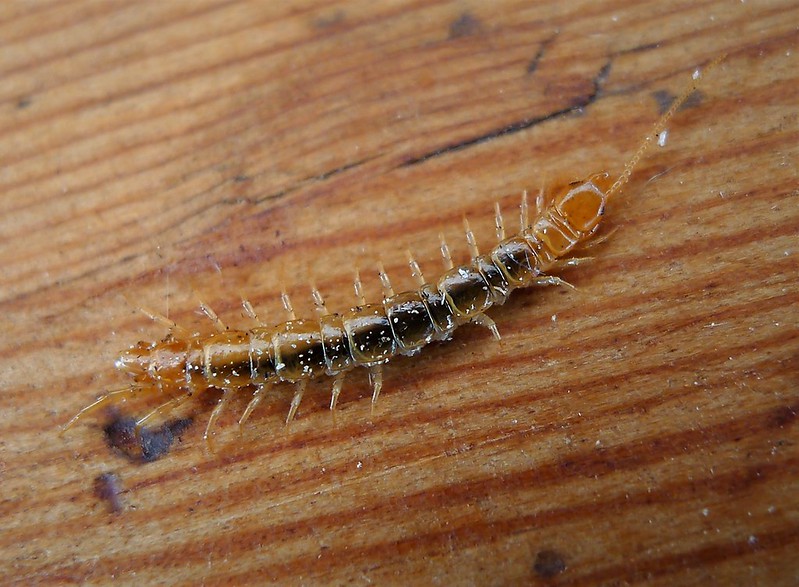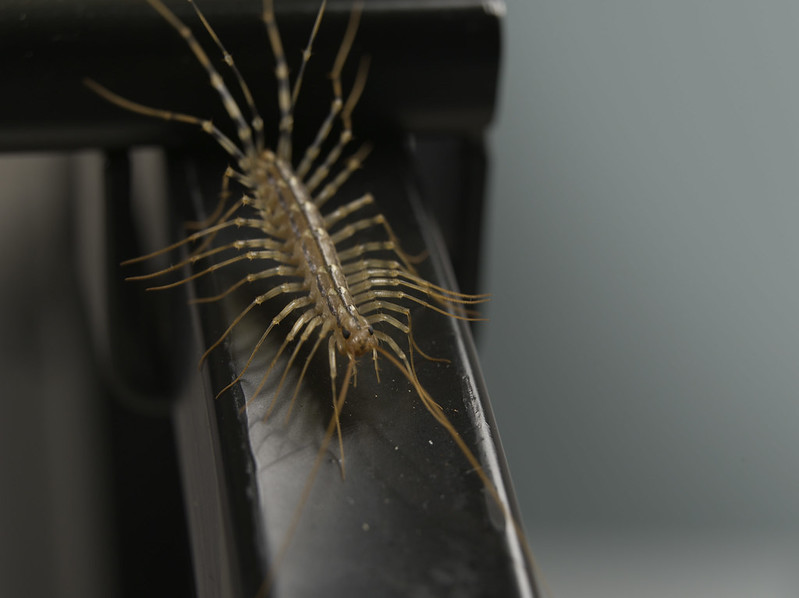Centipedes are long arthropods — not insects — who are famous for having numerous pairs of legs. These bugs possess, in fact, a pair of leg for every segment of their bodies. Some centipedes only have 17 pairs of legs while others crawl around on nearly 200 pairs of legs. No centipede quite lives up to their name, however, as these bugs always have an odd pair of legs.
Besides their main claim to fame, centipedes also have other distinctive features. They include round or flattened heads from which antennae protrude, long and visible mandibles, and different types of (compound) eyes that make them look a little alien.
Centipedes are a group of arthropods, rather than a single species. The type most people will be concerned about are so-called house centipedes, which are a common household pest, even though they (scientifically called Scutigera coleoptrata) are far from the most dangerous kind.
What Causes Centipedes in the House?
House centipedes, gray-yellow members of the centipede family who have up to 15 pairs of legs, prefer to take refuge in cool, dark, and damp places. They’ll happily live outside if they can find the right kind of habitat there, but they are also commonly found within the home, where they can spend their entire lives.
Centipedes will appear on your property — most typically, but not exclusively in basements, crawl spaces, and ground floor rooms. These bugs need a lot of moisture to thrive, seek darker and cooler spaces, and will need food sources in the form of small insects and arachnids (mainly spiders).
Where Do Centipedes Come From?
If you want to know where house centipedes originated, the answer is that they come from the Mediterranean. These bugs have spread far and wide, and today live across Europe, in Asia, and in all regions of the Americas.
They are thought to have been introduced to the US after first reaching Guatemala and Mexico, and they may originally have been “stowaways” on ships.
As to how they got into your home, though — that’s a different story. Like nearly all bugs, house centipedes are able to find their way into homes through tiny cracks and crevices anywhere in your home.
Since centipedes don’t fly, any that migrated to your home from outdoors in search of perfect living conditions will have walked in.
It is more likely, however, that “your personal centipede population” is “native” to your property. House centipedes live for a surprising amount of time; three to seven years, growing longer with each molting. Many spend their whole lives inside buildings, and the centipedes you encounter in your home could well be among them.
Do Centipedes Lay Eggs?
Yes. House centipede reproduce sexually (unlike some bugs), starting in their third year of life. They lay their eggs each spring from that point forward, if they can find a mate. Research has shown that house centipedes produce an average of 63 eggs each spring, though they can also lay more than 150. The larvae that hatch have four pairs of legs and will keep growing throughout their lives.
Do You Need to Be Worried if You Have House Centipedes in Your Home?
Yes and no — let us explain.
The fact that house centipedes depend on high-moisture environment as well as numerous other bugs (which they eat) to thrive means that their presence indicates you probably have both in your home. Dampness is bad news, as it can invite mold and cause damage to your property, as well as potentially posing a health risk.
As predators, however, house centipedes can — no matter how much they may creep you out — be seen as little helpers. You might not like centipedes, but do you like cockroaches, bed bugs, and clothes moths even less? You should, because unlike house centipedes, all of these bugs are well-known to cause health problems, whether in the form of bites or allergic reactions. If you have these harmful bugs in your home, house centipedes are a helpful natural form of pest control, as they eat these nasty bugs.
Having said that, because moisture and other bug infestations do cause tangible heath problems as well as potential property damage, you will want to take steps to reduce the humidity levels in your home, fix sources of moisture, and consider taking pest control steps to get rid of any more dangerous infestations.
Citations and Credits



